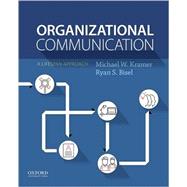Organizational Communication: A Lifespan Approach is a student-focused introduction to the field. Full of real-world stories, helpful and unique illustrations, and constant application of theory, this text engages students and shows them how to apply concepts, theories, and perspectives in every chapter.
Organizational Communication helps students understand their communication as participants in organizations throughout their lifetimes. It begins with how pre-career experiences influence our expectations for organizational experiences and ends with organizational exits, including retirement. This approach provides a seamless integration of theory and application while helping students at any stage of life reflect on past experiences, prepare for new endeavors and roles, and understand vital organizational theories and perspectives in new and concrete ways.








